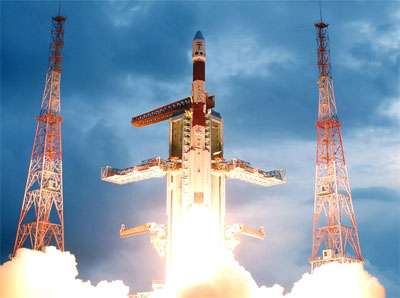India on the ISS: it starts with a rackby Taylor Dinerman
|
| It has been hard just to build the station, and this effort has distracted the leaders of these government space agencies from preparing to utilize the facility to the fullest extent possible. |
It has been natural for those involved in the project to concentrate on the task at hand and not to get distracted by plans and preparations that can only bear fruit if the job is completed. Now, however, the time has come to begin to change the focus and to seek ways to get the maximum return on the investment that has been made. The US Congress’s decision to designate the ISS as a national laboratory is a step in this direction.
The partnership now needs new sources of ideas and new people who will bring a new perspective to the program. Obviously China and India are the first candidates for membership. China seems to be holding its cards close to its vest, and the continuing lack of real transparency in their program will make it hard for them to join up any time soon. India, on the other hand, has opened itself to international cooperation and has proven itself a reliable and talented partner.
India’s Chandrayaan-1 moon mission has not only been a scientific and technological success, but it has been an international political winner. By incorporating instruments from Europe and the US as well as their own ones, and doing so in an open way, the Indian Space Research Organisation (ISRO) has proven itself to be, without question, one of the world’s top space agencies.
ISRO wants to follow up this mission with another Moon mission and then a Mars mission. More to the point, ISRO has begun studying a two-person capsule that could put India in the same league with Russia, the US, and China: nations that are able to launch humans into orbit. For the moment, the only reasonable destination for such a spacecraft is the ISS.
India has not only proved itself with Chandrayaan, it has also made a critically important step towards a truly civil space program, by setting up a military space command. This separation puts India well within international norms and indicates that the government in New Dehli wants to make it fairly easy for ISRO to join international space projects, such as the ISS. By itself, this will not solve the problems with the transfer of sensitive dual-use technology, but it shows that India is ready to take those concerns into consideration. Of course, life would be easier for everyone if the US were able to seriously reform export control regulations.
One obstacle to India’s joining the ISS is lack of money. This is what killed Brazil’s membership and preliminary talks with India should be careful to insure that ISRO’s commitments are compatible with India’s overall budgetary policy. It spite of its limited funds, ISRO has already taken steps along the path to developing its own system for manned spaceflight.
In January 2007 they launched their Space Capsule Recovery Experiment on one of their Polar Satellite Launch Vehicles (PSLV). The experiment stayed in orbit for 12 days and was recovered by the Indian Coast Guard and Indian Navy in the Bay of Bengal. Among other things this showed that ISRO has the capability to design and build workable ablative heat shields that could be used for manned capsules. No one really knows how long it will take them to build their new capsule, but it will be interesting to watch the process they use to human-rate the Geosynchronous Satellite Launch Vehicle (GSLV) they plan to use.
| India has earned the right to be considered a full-fledged spacefaring nation. Inviting them to be a full partner on the ISS will simply make clear what everyone in the space industry already knows. |
What makes sense for the ISS partnership in the short term is to offer India full control of an experimental rack. The agreement with Japan stipulates that a number of the racks in the Kibo module will be controlled by NASA. Since the US has been cutting back on some of the science work it once planned to do on the ISS, it would be logical to offer this space to India, free of charge. ISRO could then take charge of outfitting the rack with experiments devised by Indian scientists.
At some point India could begin to fly its own astronauts to the station, either on one of the last Shuttle flights or with the Russians. They have not had anyone in orbit since Rakesh Sharma flew to the Salyut 7 station in 1984. It’s about time that an Indian citizen returned to space.
India has earned the right to be considered a full-fledged spacefaring nation. Inviting them to be a full partner on the ISS will simply make clear what everyone in the space industry already knows. It would also be a nice way for President Obama to begin his administration’s relationship with the world’s most populous democracy.
